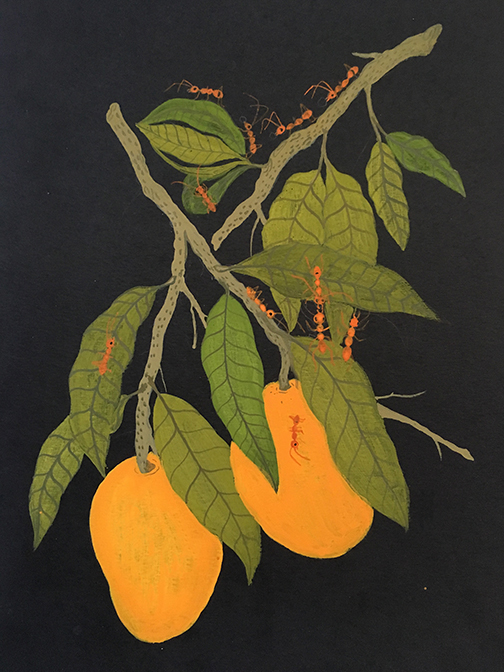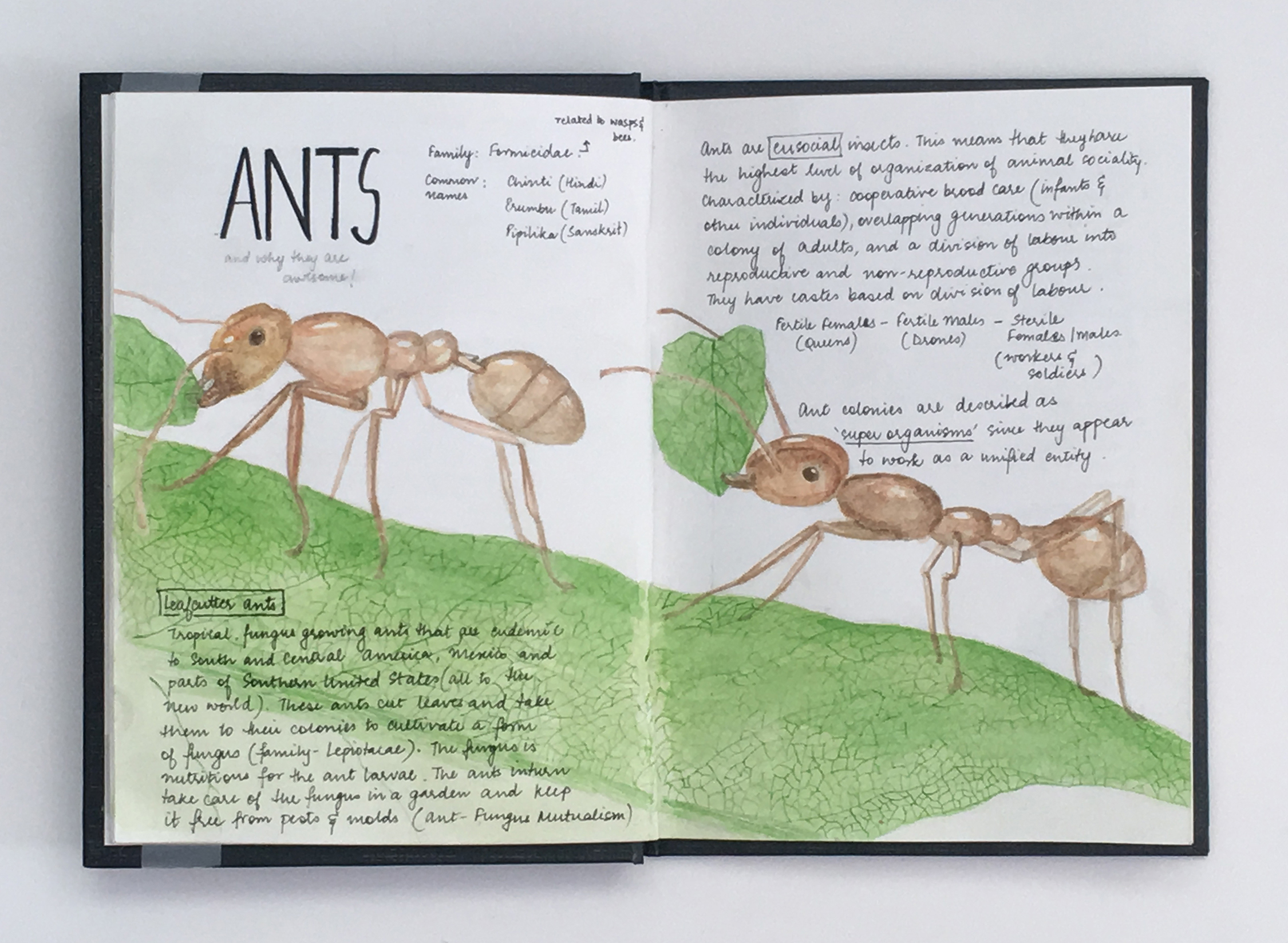Sacred Animals
Personal Project
2018- (ongoing)
Personal Project
2018- (ongoing)
Referencing the book ‘Sacred Animals of India’ authored by Nanditha Krishna, I started a project on studying these animals through documentaries and making a series that shows the ecological roles of these animals along with the plants that are a part of their ecosystem.

‘Weaver Ants building nest on mango tree’
Gouache on coloured paper
8.27*11.69 inches
Weaver ants are known to act as bioindicators for rain and storms. The ants are adept at building nests from tree leaves using secretion from the larvaes.
It is known that the ants tend to build short and rounded nests on the lower branches of a tree, it indicates the expected rainfall to be lesser. Longer elongated nests on top branches of the tree indicate heavy rainfalls and nests on both top and bottom of the tree indicate erratic rainfalls. (Bagchi, Surjyoti, Archives of Applied Science Research, 2015, 7 (1):66-67 )
It is known that the ants tend to build short and rounded nests on the lower branches of a tree, it indicates the expected rainfall to be lesser. Longer elongated nests on top branches of the tree indicate heavy rainfalls and nests on both top and bottom of the tree indicate erratic rainfalls. (Bagchi, Surjyoti, Archives of Applied Science Research, 2015, 7 (1):66-67 )

‘Blackbuck eating leaves from a Khejri tree Gouache on coloured paper
8.27*11.69 inche
The khejri tree (Prospis cineraria) plays an important role in the harsh arid desert. It is the only tree that yields shade, fodder and ultimately some timber. The Blackbuck shares a special relation with the Khejri tree where it feeds on its leaves and fruits which eventually leads to the propogation of its seeds and regeneration of the tree.
The Blackbuck is considered sacred by the Bishnoi community of Rajasthan. Many men and women of this community are known to have sacrificed their lives in the past to protect the blackbuck from being hunted and the khejri tree on which it feeds.
(Krishna, Nanditha, Sacred Animals of India, Penguin Books, 2010, pp.44-46)
The Blackbuck is considered sacred by the Bishnoi community of Rajasthan. Many men and women of this community are known to have sacrificed their lives in the past to protect the blackbuck from being hunted and the khejri tree on which it feeds.
(Krishna, Nanditha, Sacred Animals of India, Penguin Books, 2010, pp.44-46)



Notes on facts about the animals referencing various documentaries
Photo credits: Saloni Agarwal
Copyright © 2011-2020 Jisha Unnikrishnan